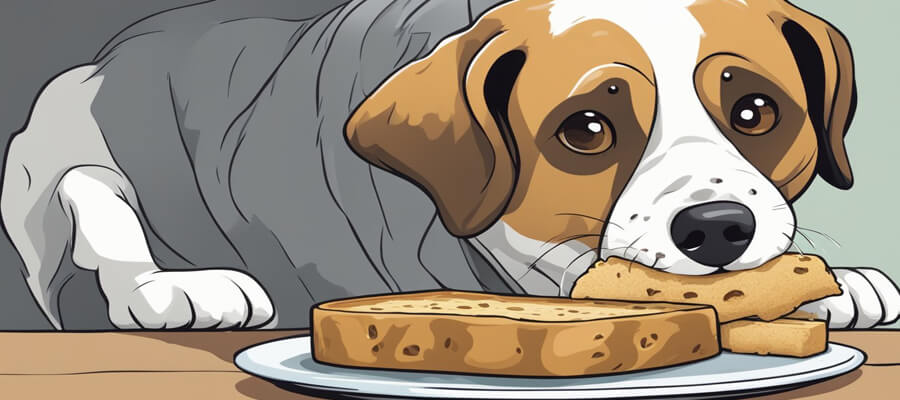
How Often Should You Feed Your Dog A Complete Guide
How Often Should You Feed Your Dog A Complete Guide for Pet Owners
Feeding your dog may seem straightforward, but it can be a source of confusion for many pet owners. Understanding how often to feed your dog is crucial for their health, growth, and overall happiness. The frequency and portion size of meals can vary based on factors such as age, breed, size, activity level, and specific health needs. This comprehensive guide aims to clarify how often you should feed your dog and help you establish a feeding routine that ensures their well-being.
1. Puppy Feeding Schedule
Puppies have unique nutritional requirements that change as they grow. Here's how often you should feed your puppy at different stages:
- 6 to 12 Weeks Old: Puppies at this age should be fed four meals per day. This frequent feeding helps them get the necessary nutrients for growth and energy.
- 3 to 6 Months Old: You can reduce their feeding frequency to three meals per day. As they grow, their digestive systems can handle fewer meals.
- 6 to 12 Months Old: By this age, most puppies can transition to two meals per day.
Tips for Feeding Puppies:
- High-Quality Puppy Food: Choose food specifically formulated for puppies, as it contains the right balance of nutrients for their rapid growth.
- Portion Control: Follow the feeding guidelines on the dog food packaging, but adjust according to your puppy's growth and activity level.
2. Adult Dog Feeding Schedule
Essentials for Your Newly Adopted Pet
Welcoming a shelter pet into your life is a beautiful journey. Here are some handpicked items to help your new friend feel safe, loved, and right at home:
Adult dogs generally require fewer meals than puppies. A standard feeding schedule for most adult dogs includes:
- Two Meals per Day: Most adult dogs thrive on a routine of two meals, ideally spaced 8-12 hours apart.
- Small Breeds: Smaller breeds might benefit from three meals per day, as they have faster metabolisms and can digest smaller portions better.
- Large Breeds: Large breeds might do well with one large meal or two smaller meals to help prevent bloating, which can be a risk in these dogs.
Considerations for Adult Dogs:
- Monitor Weight: Keep an eye on your dog's weight and adjust food portions as needed.
- Consistency: Feeding your dog at the same time every day helps establish a routine.
3. Senior Dog Feeding Schedule
As dogs age, their metabolism and activity levels typically decrease. Senior dogs may have specific dietary needs, and a tailored feeding schedule can help:
- Feeding Frequency: Most senior dogs do well with two meals per day, similar to adult dogs. However, some may require more frequent, smaller meals, especially if they have health issues.
Nutritional Needs for Senior Dogs:
- Choose Appropriate Food: Select high-quality senior dog food formulated to meet their nutritional needs, often with lower calories and higher fiber.
- Health Monitoring: Watch for changes in appetite, weight, and behavior that might necessitate adjustments to their diet.
4. Special Considerations
Some dogs may have unique dietary needs based on their health status or lifestyle. Here are factors to consider:
Health Conditions:
- Obesity: If your dog is overweight, consult your vet about a weight management plan and a suitable feeding schedule.
- Allergies or Sensitivities: Dogs with food allergies may require special diets and feeding adjustments to manage their conditions.
Activity Level:
- Active Dogs: Highly active dogs or working breeds may need more calories and possibly additional meals.
- Less Active Dogs: Dogs with lower activity levels might require fewer calories and smaller portions to maintain a healthy weight.
5. Portion Control and Monitoring
Regardless of your dog’s age or health status, portion control is essential for maintaining their weight and health:
- Follow Feeding Guidelines: Use the feeding guidelines provided on the dog food packaging as a baseline.
- Measure Accurately: Use a measuring cup to ensure you provide the correct portion sizes.
- Adjust as Needed: Be prepared to adjust food portions based on your dog’s weight, activity level, and overall health.
Signs of Overfeeding:
- Weight gain or obesity
- Lethargy or decreased activity
- Difficulty breathing or excessive panting
Signs of Underfeeding:
- Weight loss
- Low energy levels
- Excessive begging or scavenging behavior
Conclusion
Feeding your dog is an essential aspect of responsible pet ownership. By understanding how often to feed them based on their age, size, activity level, and health status, you can create a balanced feeding schedule that promotes their well-being. Always keep an eye on their weight and overall health, making adjustments as necessary. When in doubt, consult your veterinarian for guidance tailored to your furry friend’s specific needs.
Affiliate Products
We may earn a small commission when you shop through our links — it helps us keep sharing love and care for every dog out there, at no extra cost to you.
Up to 75% Discount

Dog Collar with Health Monitoring
BUY NOW »
Up to 55% Discount

Luxury Faux Furhuge Napping Bed
BUY NOW »

